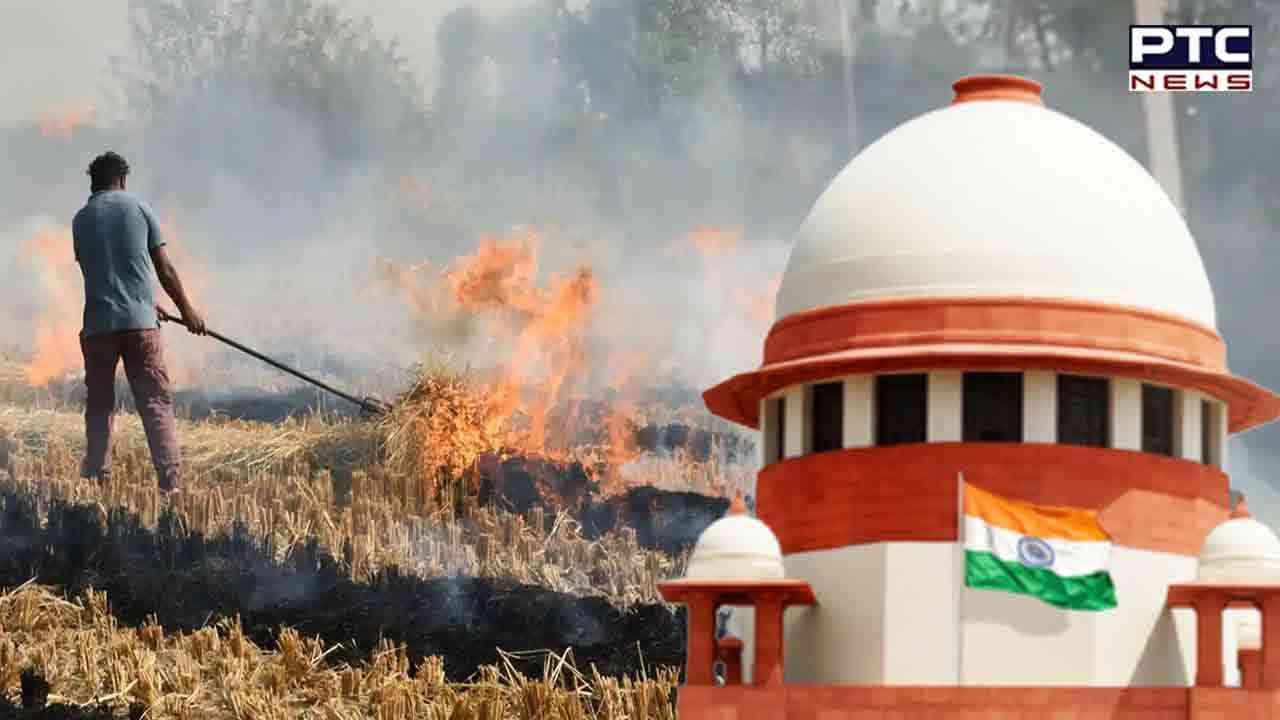
SC raises concerns over Punjab, Haryana’s inaction on stubble burning amid rising air pollution
Stubble burning: The Supreme Court, while resuming hearing on stubble burning menace on Thursday, reiterated concern over reluctance to prosecute officials for violating CAQM orders on stubble burning.
Notably, on Monday, the Supreme Court had expressed grave concerns regarding the failure of the Punjab and Haryana governments to take legal action against officials violating the orders of the Commission for Air Quality Management (CAQM) under Section 14 of the CAQM Act, in the ongoing issue of crop residue burning.
A Bench comprising Justice Abhay Oka and Justice Augustine George Masih was hearing a case related to pollution management in Delhi-NCR, specifically focusing on air pollution caused by vehicle emissions, solid waste management, and stubble burning. The Bench reviewed affidavits submitted by both state governments, which indicated a rising number of incidents involving the burning of crop residue in the region.
The Supreme Court expressed dissatisfaction with both states’ reluctance to take action under Section 14 of the CAQM Act, which mandates legal proceedings against officials found guilty of violating the law. "We are still witnessing reluctance from the governments in taking action under Section 14 of the CAQM Act. The authorities have been busy issuing show-cause notices to officials instead of prosecuting them. We are talking about a gross violation of the Commission's orders made three years ago. The states must explain their inaction to the court," the Bench observed.
The court instructed both state governments to submit affidavits within three weeks, outlining concrete steps taken to comply with the CAQM Act and providing details on actions against violators. The next hearing is scheduled for December 16.
The Bench also raised concerns over the inadequate machinery and equipment available for managing crop residue, noting the troubling number of farmers approaching the court with complaints on this front. The Bench emphasised that addressing these needs should be the responsibility of the state governments. The apex court also directed the Punjab and Haryana governments to raise concerns about the alleged inaccurate data from ISRO with the relevant authorities.
As per the Delhi government's affidavit, the Environment Protection (Inspection and Penalty Procedure) Rules, 2024, have been officially published in the gazette and are now in force along with the CAQM Amendment Rules, 2024. The court directed all authorities concerned, including the state governments, to implement these rules promptly.
On November 4, after a hearing, the CAQM became more active in Punjab. By November 13, a team from CAQM had arrived in Punjab. The CAQM issued show-cause notices to the District Magistrates (DC) and Senior Superintendents of Police (SSP) in Sangrur and Ferozepur districts after an increase in incidents of crop residue burning was reported. The commission is seeking explanations from the authorities regarding the continued stubble burning despite ongoing efforts to curb the practice.
The number of crop residue burning cases in Punjab continues to rise. On Wednesday, 509 incidents of stubble burning were reported across the state, with the highest number occurring in Faridkot and Ferozepur, both recording 91 cases. Other districts such as Moga, Muktsar, and Bathinda also reported high numbers. Sangrur, however, saw a decrease in cases following increased enforcement, with only seven incidents reported.
The total number of crop burning incidents in Punjab has now crossed 7,600, with the highest number of cases in Sangrur, which reported 1,388 incidents. Other districts such as Ferozepur (954), Tarn Taran (700), Amritsar (651), and Mansa (486) also saw significant numbers of stubble burning.
Addressing the issue of pollution, Punjab Chief Minister Bhagwant Mann, speaking at the 'Punjab Vision 2047' conference at Panjab University on Wednesday, urged that the solution to pollution should not involve blame-shifting between states but should be pursued through mutual cooperation. He sarcastically commented on the claims of Pakistan's Punjab Chief Minister Maryam Nawaz, who had alleged that polluted smoke from Punjab was reaching Lahore.
On the other hand, in view of the Supreme Court’s strict stance, the Central Government has now doubled the fines for farmers involved in stubble burning. According to a notification released by the Ministry of Environment recently, farmers who burn crop residue on land less than 2 acres will now be fined Rs 5,000. For land between 2 to 5 acres, the fine has been increased to Rs 10,000, and for land over 5 acres, the penalty is Rs 30,000. These rules will be enforced by the governments of Punjab, Haryana, Uttar Pradesh, Rajasthan, and Delhi.
- PTC NEWS
